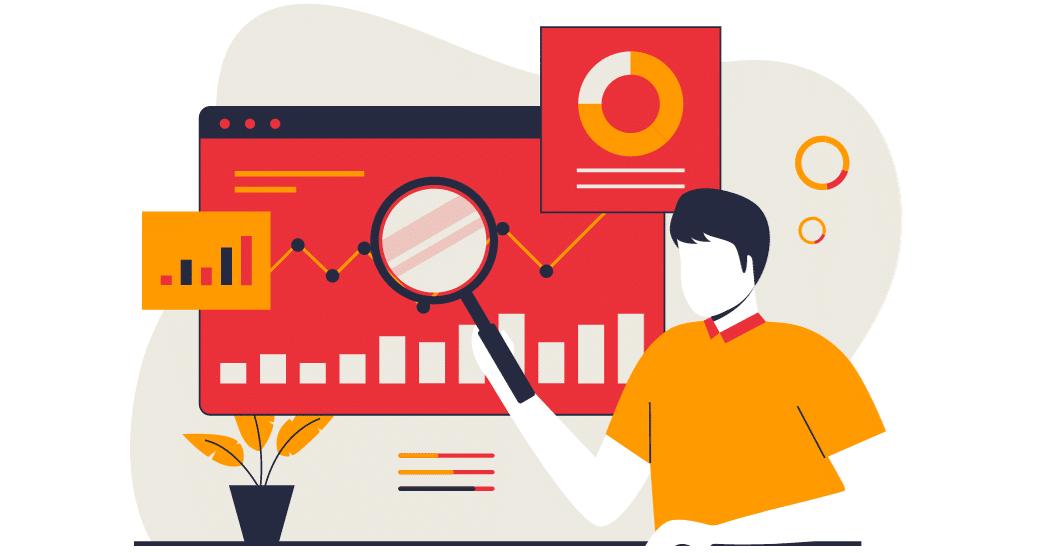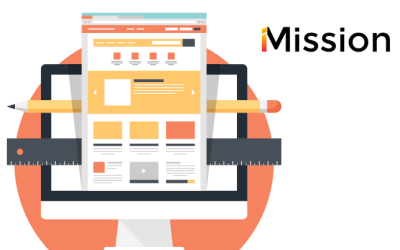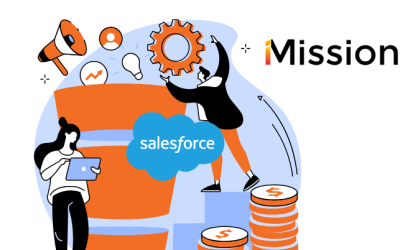Your CRM (or Customer Relationship Management tool) is the intelligent database at the heart of all your outreach efforts. It keeps records of all your contacts, which allows you to track each person’s engagement over time.
To best connect with your audience, your CRM and your automation platform must work together.
Often, this happens seamlessly. Many automation platforms are also CRMs (or vice versa), so smooth functioning is virtually guaranteed. But this isn’t always the case.
As you plan marketing campaigns for your nonprofit, you’ll need to be certain that information is flowing easily between both tools.
Let’s look at how that happens.

Getting to Know Your Tools
First off, we need to know the difference between these two tools to understand gaps and overlaps in what they do.
What is a CRM?
A CRM is an intelligent database that keeps track of all of your stakeholders, including donors, volunteers, clients, and advocates. The function of the CRM is to manage and maintain relationships with your audience.
Within your CRM, you can see contact records that include all of the information you have about a given person. While there are obvious ones like name, address, and phone number, CRM data goes much deeper. You can see records of all communication (calls made, SMS messages sent, emails opened, etc.) and that person’s activity on your website (pages viewed, forms filled out, etc.).
CRMs track a person’s progress from conversion (the first time they fill out a form on your website) to donation — and onward.
What is a marketing automation platform?
Marketing automation tools help you automate marketing tasks, especially email campaigns, newsletters, and lead nurturing, to spread your message and keep your audience engaged.
To effectively automate your communication, you may need to segment your audience, grouping them by characteristics like location, age, past donor status, or more.
Marketing automation tools rely on data from your CRM to contact the right people at the right time with the right message.
Integrating Your Automation and CRM Tools
To ensure your automation tools play nicely with your CRM, you should follow some basic steps and best practices.
- Articulate what you want to accomplish. You can’t measure success without determining what you’re trying to achieve. Before you buy any expensive software, figure out what you’re trying to do.
- Choose your tools wisely. Many automation tools include integrations with CRMs, so you can be sure your experience will be seamless. Some don’t. When you’re choosing your tech stack, pay close attention to which tools work well together. Even if you’re using two different tools, there’s a good chance there’s an API (Application Program Interface) that can connect them. Even this, though, can be fallible. Is the API built by the companies themselves, or is it from a third party? You need to trust every aspect of your data management.
- Assign an ‘owner’. If no one owns something, it’s more likely to get neglected and slip through the cracks. So, who’s responsible for making sure these systems run smoothly? Your head of marketing? Someone on your IT staff? Make sure it’s someone internally — and make sure they have the bandwidth to do it. You don’t want the owner to be some point of contact at an outside agency. Your data will essentially be held hostage if you always have to call and write a check if something goes wrong.
- Conduct a data audit. Look over the data you have today. Clean up what you can and note any gaps or duplications.
- Customize the integration settings. Work within each platform to ensure data and information can move between them without impediment.
- Plan your workflows. Every reminder email and newsletter in your personal inbox is the product of careful planning by marketing teams. If you want your organization to do the same, you must plan. What should happen when someone downloads a resource, signs up for your newsletter, or donates? Develop your strategy — then build the processes to bring it to life.
- Gather data, tweak, repeat. Keep learning, adjusting, and improving as your systems get up and running.
Long-Term Marketing Automation Success
By nature, marketing is a long game. It’s unlikely that a single email or a single social media post will turn some unaware browser into your next big donor. Trust is built over time, and donations come by way of many touchpoints.
To build a marketing engine that delivers steady results for years to come, build the habits that will create that success.
Invest in team training
If you want to grow your organization, you need to grow your people. Offer training and encourage experimentation. Reward the certifications and coursework your employees complete. The tools you’re using are constantly getting updated and improved. You’ll start backsliding if your team doesn’t improve at the same rate.
Practice good data hygiene
Conventional marketing wisdom says that any database decays by about 10% per year. People move and switch jobs, and their work email addresses get shut down; they change their phone numbers. On top of that, typos and duplicate content can wreak havoc on your marketing.
CRM tools can help you sort through your list and clean it up, as can third-party tools like Neverbounce and Kickbox.
But you’ll have to do something about your new data, too. Be clear about naming conventions, and be consistent about properties. Keep that list clean, and you’ll get better results.
Don’t think you can ‘set it and forget it’
We all want to let the tools do their magic, but that mindset is hazardous. Just running the same playbook month after month will likely produce ever-diminishing returns. Instead, be sure to experiment. Track metrics along the way to see what’s effective and what’s not.
Document your processes
If it’s not written down, it doesn’t exist. However you handle project management, make sure there’s a record somewhere of how things get done, who handles what, and what the results have been.
Building Your Marketing Success
With your CRM and automation platform in full sync, you can spread your message, grow your audience, and engage your contacts better than ever before.
But don’t just jump in. This situation requires careful planning so you don’t clean up today’s messes in six months.
Do the work to ensure the tools are working together as they should. And remember, while marketing is a long game, your approach can’t be static. Commit to learning and experimentation so that the results you’re getting today are nothing compared to where you’ll be a year from now.
Marketing automation will let you find new donors, volunteers, and clients – and more quickly and successfully move them to action. Our Ultimate Guide to Marketing Automation for Nonprofits shows you, step-by-step, how your organization can take your marketing to a whole new level.

About iMission Institute
iMission is a full-service marketing and stakeholder engagement agency. We work exclusively with mission-driven organizations. We are proud to be a leading nonprofit CRM consultant offering expertise in CRM architecture, workflow process solutions, and client training. Our team has deep experience in Salesforce’s Nonprofit Success Pack (NPSP), Marketing Cloud, Experience Cloud, Service Cloud, Education Cloud, Marketing Cloud Account Engagement/Pardot, Einstein Artificial Intelligence (AI), data integrity, and dozens of application integrations. We support and grow our client’s capabilities in advocacy, case management, donor management, grants management, community portals, automated communications, and more. Our clients include nonprofit organizations, health systems, school districts, municipalities, and social enterprises. Contact us to learn more about how we can assist your organization today!



